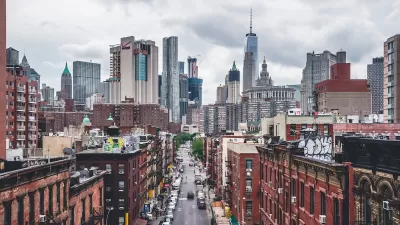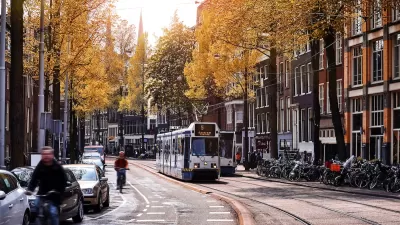In the first entry in an eight-part series, Aparna Piramal Raje explores the challenges facing an urbanizing India that lacks sufficient planning to ease the country's transition from a nation of villages.
"Indian towns and cities are characterized by a particularly dangerous combination of low-rise construction, high-density population in their central areas, and almost non-existent mass rapid public transport," observes Raje. "Congestion, pollution, vast proportions of uninhabitable accommodation and impoverished living standards characterize most fast-growing Indian cities."
"'Growth of urban agglomerations, especially outside urban administrative boundaries, is incoherent and un-coordinated, driven by real estate developers and market forces, rather than urban planning,' says H.S. Sudhira, an urban researcher and author of a working paper on land cover of Indian cities, to be published by IIHS, an institution that focuses on urban transformation."
And while many recognize the importance of India's cities as engines for economic growth, urbanization is "not part of the larger policy debate in the country," says Isher Judge Ahluwalia, chairperson of the Indian Council for International Economic Relations. "This myopia of policymakers is attributed to the [perhaps inaccurate] prevailing mindset that the majority of India still resides in the villages, and that urban centres account for a minority of the Indian population," explains Raje.
There's optimism though that the inattention to urban issues may be waning. For instance, the recent decision by the Delhi high court to dismiss a petition that challenged the city's bus rapid transit system (BRT) is seen as a promising step.
"Ahluwalia equates the discourse on urbanization today to the debate surrounding the pros and cons of liberalization in the 1980s, predicting that it will gather momentum in the near future. 'If we could move from a heavy industry-dominated, public sector-dominated, closed economy in the ’80s to liberalization in the ’90s, I have no doubt that the transition (of the urbanization debate) will be faster.'”
FULL STORY: India’s urban challenge

Maui's Vacation Rental Debate Turns Ugly
Verbal attacks, misinformation campaigns and fistfights plague a high-stakes debate to convert thousands of vacation rentals into long-term housing.

Planetizen Federal Action Tracker
A weekly monitor of how Trump’s orders and actions are impacting planners and planning in America.

In Urban Planning, AI Prompting Could be the New Design Thinking
Creativity has long been key to great urban design. What if we see AI as our new creative partner?

Portland Raises Parking Fees to Pay for Street Maintenance
The city is struggling to bridge a massive budget gap at the Bureau of Transportation, which largely depleted its reserves during the Civd-19 pandemic.

Spokane Mayor Introduces Housing Reforms Package
Mayor Lisa Brown’s proposals include deferring or waiving some development fees to encourage more affordable housing development.

Houston Mayor Kills Another Bike Lane
The mayor rejected a proposed bike lane in the Montrose district in keeping with his pledge to maintain car lanes.
Urban Design for Planners 1: Software Tools
This six-course series explores essential urban design concepts using open source software and equips planners with the tools they need to participate fully in the urban design process.
Planning for Universal Design
Learn the tools for implementing Universal Design in planning regulations.
Gallatin County Department of Planning & Community Development
Heyer Gruel & Associates PA
JM Goldson LLC
City of Camden Redevelopment Agency
City of Astoria
Transportation Research & Education Center (TREC) at Portland State University
Jefferson Parish Government
Camden Redevelopment Agency
City of Claremont





























